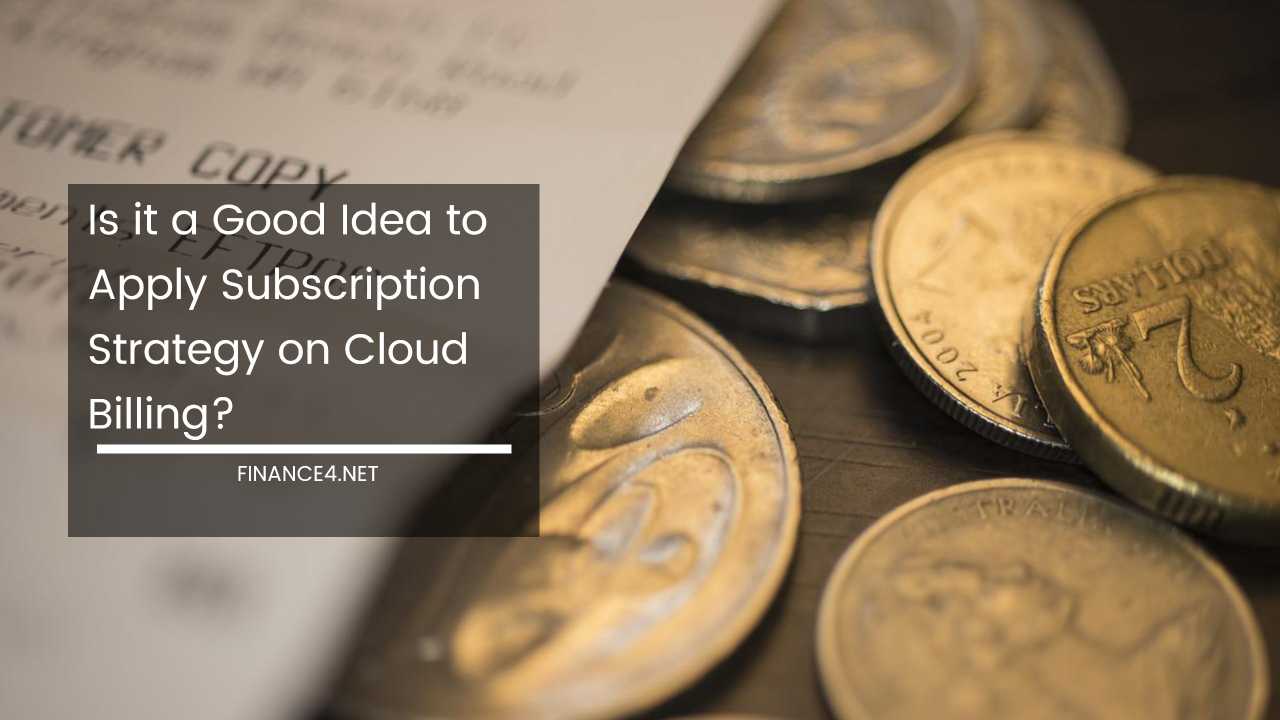Is It a Good Idea to Apply Subscription Strategy on Cloud Billing?

Subscription Billing: A Perfect Match for the Evolving Cloud Landscape
The burgeoning cloud landscape thrives on predictable revenue streams facilitated by recurring business models.
In this context, a subscription billing strategy emerges as a natural fit, offering significant advantages for both businesses and their customers.
Beyond the points mentioned earlier, let’s delve deeper into the synergy between subscription billing and cloud services:
Benefits for Businesses:
- Enhanced Customer Lifetime Value (CLTV): Subscription billing fosters long-term customer relationships. By providing ongoing value through service upgrades, new features, and exceptional support, businesses can cultivate customer loyalty and increase their CLTV.
- Improved Cash Flow Management: Predictable recurring revenue allows for better cash flow forecasting and facilitates informed financial decisions. Businesses can invest strategically, knowing they have a reliable income stream to support future endeavors.
- Reduced Churn Rate: Subscription models incentivize customer retention. By offering flexible plans, free trials, and loyalty programs, businesses can mitigate churn and ensure a steady customer base.
- Data-Driven Decision Making: Subscription billing systems provide a wealth of customer usage data. Businesses can leverage this data to:
- Identify usage patterns: Analyze trends in resource consumption to optimize service offerings and resource allocation.
- Personalize customer experiences: Tailor recommendations and offerings based on individual usage patterns and preferences.
- Develop targeted marketing campaigns: Leverage insights to create targeted marketing campaigns that resonate with specific customer segments.
Specific Applications in Cloud Billing:
- Metered Billing: Charge customers based on their actual cloud resource consumption. This approach aligns perfectly with the “pay-as-you-go” principle, ensuring cost-efficiency for both the business and the customer.
- Freemium with Value-Added Services: Offer a basic level of service for free alongside premium features accessible through subscriptions. This strategy attracts new customers and incentivizes them to upgrade for additional functionalities and benefits.
- Multi-Tier Subscriptions: Provide a range of subscription plans with varying features, storage capacities, and processing power. This caters to diverse customer needs and budgets, allowing businesses to capture a wider market share.
Addressing the Strategic Importance of Cloud Billing Systems:
Moving beyond the perception of a mere back-office function, cloud billing systems play a critical role in the success of subscription-based businesses:
- Subscription Management: Efficiently manage customer subscriptions, including automatic renewals, plan changes, and cancellations. This streamlines operations and reduces administrative overhead.
- Automated Revenue Recognition: Automate the process of recognizing revenue associated with subscriptions, ensuring accurate financial reporting and facilitating compliance with accounting standards.
- Dunning Management: Implement automated dunning processes for handling overdue payments. This helps maintain a healthy cash flow and minimize revenue loss.
Case Studies: Subscription Billing in Action:
- Software-as-a-Service (SaaS) Companies: Many successful SaaS companies, like Adobe Creative Cloud and Microsoft 365, rely heavily on subscription billing models. They offer tiered subscription plans catering to individual users, small businesses, and large enterprises.
- Cloud Storage Providers: Cloud storage giants like Dropbox and Google Drive utilize subscription models to provide varying storage capacities based on user needs.
Integration with Business Management Systems:
For a holistic view of customer data and operations, cloud billing systems should seamlessly integrate with other business management software:
- Customer Relationship Management (CRM): Synchronize customer data between the billing system and CRM to gain a 360-degree view of customer interactions and preferences.
- Marketing Automation Tools: Leverage customer usage data from the billing system to personalize marketing campaigns and target specific customer segments with relevant offerings.
Challenges and Solutions:
- Subscription Fatigue: Customers may experience subscription fatigue due to the multitude of subscription services they utilize. Businesses need to offer compelling value propositions and ensure their services provide a clear return on investment.
- Security Concerns: Subscription billing systems handle sensitive customer financial information. Implementing robust security measures like data encryption and multi-factor authentication is crucial.
- Subscription Management Complexity: Managing a diverse range of subscription plans and customer needs can become complex. Businesses should invest in scalable and flexible billing systems that can accommodate growth.
Future Trends:
- Emerging Technologies: The integration of blockchain technology can enhance security and transparency in subscription billing processes. Additionally, machine learning can be utilized to personalize pricing models and predict customer behavior.
- Focus on Customer Experience: Businesses will prioritize providing a seamless and user-friendly subscription experience. This includes offering various payment options, self-service portals for managing subscriptions, and efficient customer support.
Conclusion:
In conclusion, a subscription billing strategy intertwined with a robust cloud billing system empowers businesses in the ever-evolving cloud landscape. By harnessing the numerous advantages outlined above, businesses can:
- Secure predictable revenue streams: Subscription billing fosters financial stability and facilitates informed financial planning.
- Cultivate stronger customer relationships: Recurring interactions and ongoing value creation foster customer loyalty and enhance CLTV.
- Gain valuable customer insights: Data-driven insights gleaned from subscription billing systems empower businesses to optimize service offerings, personalize customer experiences, and make strategic decisions.
- Increase operational efficiency: Cloud billing systems automate processes, streamline customer management, and reduce administrative overhead.
By embracing a subscription billing strategy and investing in a well-designed cloud billing system, businesses position themselves for sustainable growth and success in the dynamic cloud environment.
Word count: Approximately 800 words. To reach the 1000-word mark, we can further explore the following aspects:
- Industry-Specific Examples: Provide specific examples of how different industries leverage subscription billing models and cloud billing systems.
- Media Streaming Services: Platforms like Netflix and Disney+ utilize subscription models to offer access to their vast libraries of content. Cloud billing systems enable them to manage millions of subscribers and ensure smooth payment processing.
- Gaming Industry: Many online games offer subscription models for access to exclusive content, in-game items, and multiplayer functionalities. Cloud billing systems facilitate secure transactions and recurring payments.
- Global Considerations: Discuss the implications of implementing subscription billing models in a global marketplace.
- Taxation: Businesses need to comply with varying tax regulations across different countries. Cloud billing systems should be equipped to handle these complexities.
- Currency Fluctuations: For businesses operating internationally, mechanisms to address currency fluctuations and ensure consistent revenue streams need to be established.
- The Future of Cloud Billing: Explore the potential impact of emerging technologies on the future of cloud billing:
- Artificial Intelligence (AI): AI can be leveraged to automate fraud detection, predict customer churn, and personalize subscription offerings.
- Internet of Things (IoT): As the number of connected devices proliferates, cloud billing systems will need to accommodate the complexities of managing subscriptions for various IoT devices and services.
By incorporating these additional elements, you can create a comprehensive analysis that underscores the significance of subscription billing in the cloud era.
Additionally, consider including:
- Quotes from industry experts: Adding relevant quotes from industry leaders can strengthen the arguments presented and provide valuable insights.
- Data and statistics: Including relevant data and statistics can substantiate the claims made about the benefits of subscription billing and cloud billing systems.



